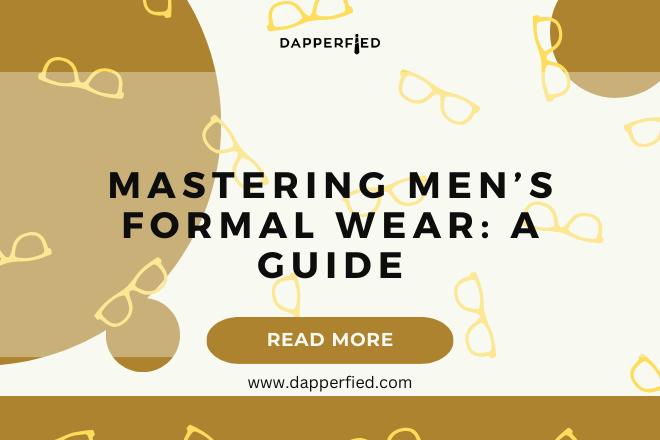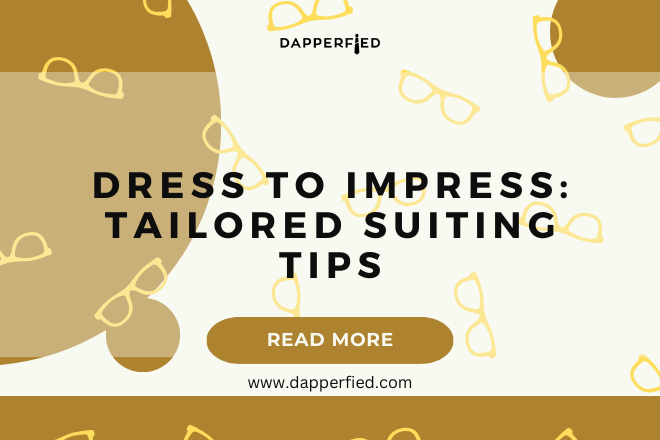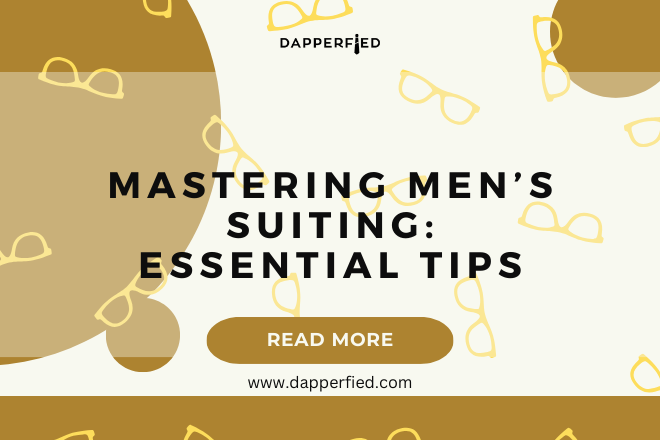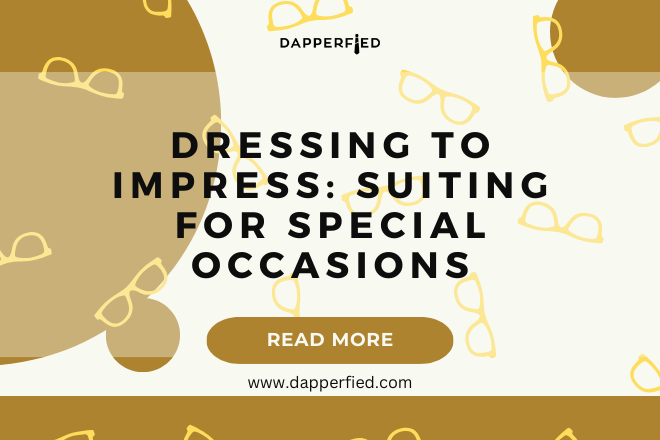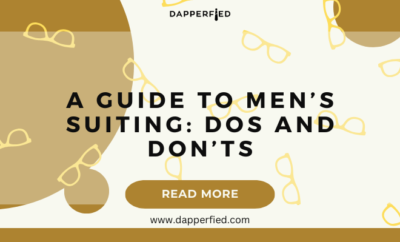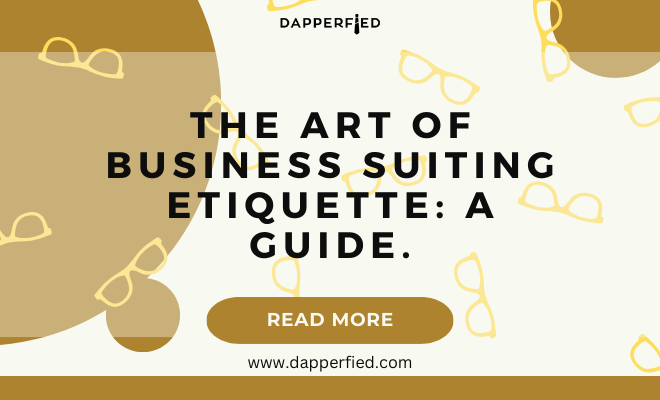
Men's Style
The Art of Business Suiting Etiquette: A Guide.
In the business world, first impressions matter. When meeting someone for the first time, it takes just a few seconds for them to form an opinion about you. This is why it is crucial to pay attention to your appearance and dress appropriately, especially when it comes to business suiting etiquette. Your choice of attire can greatly impact how others perceive you and can play a significant role in creating a professional image.
Business suiting etiquette refers to the guidelines and standards of dressing professionally in a business setting. It involves choosing the right suit, ensuring it fits well, and accessorizing appropriately. By adhering to these etiquette standards, you can convey a sense of professionalism, competence, and attention to detail.
Key Takeaways
- Choosing the right suit for your body type is crucial for a professional look.
- There are various suit styles to choose from, including single-breasted, double-breasted, and three-piece suits.
- A well-fitted suit is key to a professional look and can be achieved through tailoring.
- When purchasing a business suit, consider the fabric, color, and quality.
- Accessorizing your suit with the right tie, shoes, and accessories can elevate your look.
Suit Selection Tips: How to Choose the Right Suit for Your Body Type
When it comes to choosing the right suit, it is important to consider your body type. Different suits flatter different body shapes, so understanding your body type can help you make the right selection.
For those with a slim or athletic build, a slim-fit suit is a great option. These suits are tailored closer to the body and create a sleek and modern look. Avoid suits that are too loose or baggy, as they can make you appear smaller or shapeless.
If you have a larger build or carry some extra weight, opt for a regular or classic fit suit. These suits provide more room in the chest and waist area, creating a more comfortable fit. Avoid suits that are too tight or restrictive, as they can draw attention to areas you may want to downplay.
In terms of color, navy and charcoal gray are versatile options that work well for most occasions. These colors are classic and timeless, making them suitable for both formal and casual settings. When it comes to fabric, wool is a popular choice as it is durable, breathable, and has a natural drape.
Men’s Suiting Styles: A Comprehensive Guide to Different Suit Styles
There are various suit styles to choose from, each with its own unique characteristics and appropriate occasions. Understanding the different suit styles can help you make the right choice for different events or settings.
The single-breasted suit is the most common and versatile style. It features a single row of buttons down the front and is suitable for both formal and casual occasions. Single-breasted suits can be worn with or without a tie, depending on the dress code.
Double-breasted suits, on the other hand, feature two rows of buttons and have a more formal and traditional look. These suits are often associated with power and authority and are commonly worn in business or formal settings.
Three-piece suits consist of a jacket, trousers, and a waistcoat. They are considered the most formal option and are often worn for special occasions such as weddings or black-tie events. The waistcoat adds an extra layer of sophistication and can be worn with or without the jacket.
Tailored Suit Guide: Why a Well-Fitted Suit is Key to a Professional Look
| Topic | Metric |
|---|---|
| Fit | Shoulder width |
| Sleeve length | |
| Jacket length | |
| Pant length | |
| Waist fit | |
| Material | Fabric type |
| Thread count | |
| Breathability | |
| Durability | |
| Style | Lapel width |
| Button stance | |
| Pocket style | |
| Vent style | |
| Pant pleats |
No matter how expensive or stylish your suit may be, if it doesn’t fit well, it won’t create the desired professional image. A well-fitted suit is key to looking polished and put-together.
When it comes to fit, there are a few key areas to pay attention to. The shoulders should fit snugly without any excess fabric or pulling. The jacket should button easily without any strain, and the sleeves should end at the base of your thumb, allowing about half an inch of shirt cuff to show.
The trousers should sit comfortably at your natural waistline and have a slight break at the front, where they meet your shoes. Avoid trousers that are too long or too short, as they can create an unbalanced look.
Finding a good tailor is essential for getting the perfect fit. A tailor can make adjustments to your suit to ensure it fits your body shape and proportions. They can also make alterations to the length of the sleeves or trousers, as well as take in or let out the waist if needed.
Suit Buying Tips: What to Look for When Purchasing a Business Suit
When buying a business suit, there are several factors to consider. Firstly, it is important to set a budget and stick to it. Suits can vary greatly in price, so it is important to determine how much you are willing to spend before starting your search.

Quality is another important factor to consider. Investing in a high-quality suit may cost more upfront, but it will last longer and maintain its shape and appearance over time. Look for suits made from natural fibers such as wool or wool blends, as they are more breathable and durable.
Style is also a consideration when buying a business suit. Opt for classic styles that won’t go out of fashion quickly. Avoid trendy patterns or colors that may become dated in a short period of time.
When shopping for a suit, you have the option of buying online or in-store. If buying online, make sure to check the size guide and read customer reviews to ensure you are getting the right fit and quality. If buying in-store, take the time to try on different styles and sizes to find the perfect suit for you.
Men’s Formal Wear: The Dos and Don’ts of Dressing for Formal Occasions

Formal occasions require a higher level of dressing etiquette, and it is important to know how to dress appropriately for these events.
For black-tie events, a tuxedo is the standard attire. A tuxedo consists of a black jacket with satin lapels, matching trousers with a satin stripe down the side, a white dress shirt, and a black bow tie. It is important to wear patent leather shoes and black socks to complete the look.
White-tie events are the most formal of all occasions and require a full evening dress. This includes a black tailcoat, a white wing-collar shirt, a white bow tie, black trousers with a satin stripe, and black patent leather shoes. It is important to wear a white waistcoat and white gloves for white-tie events.
When it comes to accessorizing formal wear, it is important to keep it simple and elegant. Opt for a classic black bow tie for black-tie events and a white bow tie for white-tie events. Cufflinks, pocket squares, and boutonnieres can also be added to enhance the overall look.
Accessorizing Your Suit: Tips for Choosing the Right Tie, Shoes, and Accessories
Accessorizing your suit is an important part of creating a polished and put-together look. The right tie, shoes, and accessories can complement your suit and enhance your overall appearance.
When choosing a tie, opt for one that complements the color and pattern of your suit. Solid-colored ties are versatile and can be worn with any suit, while patterned ties can add visual interest to a plain suit. Make sure the width of the tie matches the width of your lapels for a balanced look.

Shoes are another important accessory to consider. Opt for leather dress shoes in a classic style such as oxfords or brogues. The color of your shoes should match or complement the color of your suit. Make sure your shoes are clean and polished to maintain a professional appearance.
Other accessories such as pocket squares, cufflinks, and belts can also add a touch of sophistication to your suit. When choosing these accessories, make sure they complement the overall look and don’t overpower or clash with your suit.
Business Suit Maintenance: How to Keep Your Suit Looking Sharp and Professional
Once you have invested in a quality suit, it is important to take care of it to ensure it maintains its sharp and professional appearance.
Regular cleaning is essential to keep your suit looking its best. Dry cleaning is recommended for suits, as it helps remove stains and odors without damaging the fabric. However, excessive dry cleaning can cause the fabric to lose its shape and luster, so it is important to only dry clean when necessary.
In between dry cleanings, you can spot clean any stains or spills using a mild detergent and a clean cloth. Make sure to test the detergent on a small, inconspicuous area of the suit first to ensure it doesn’t cause any discoloration.
Pressing your suit is also important to remove any wrinkles or creases. Use a steam iron on a low setting or take your suit to a professional cleaner for pressing. Avoid using too much heat or pressing directly on the fabric, as this can cause damage.
When not wearing your suit, make sure to store it properly to maintain its shape and prevent wrinkles. Hang your suit on a sturdy wooden hanger in a well-ventilated area. Avoid storing your suit in plastic bags or in damp areas, as this can cause mildew or mold.
Dressing for Success: How Business Suiting Etiquette Can Impact Your Career
Dressing appropriately and adhering to business suiting etiquette can have a significant impact on your career success and advancement.
When you dress professionally, you convey a sense of competence, attention to detail, and respect for the workplace. This can help build credibility and trust with colleagues, clients, and superiors. It also shows that you take your job seriously and are committed to presenting yourself in a professional manner.
In addition, dressing appropriately can help you stand out from the crowd and make a positive impression. In competitive industries where first impressions matter, a well-dressed individual is more likely to be remembered and considered for opportunities and promotions.
Furthermore, dressing professionally can boost your confidence and self-esteem. When you feel good about how you look, it can positively impact your performance and interactions with others. It can also help you feel more prepared and ready to take on any challenges that come your way.
Mastering the Art of Business Suiting Etiquette
Mastering the art of business suiting etiquette is essential for creating a professional image and building a successful career. By understanding the importance of first impressions and paying attention to your appearance, you can convey a sense of professionalism and competence.
Choosing the right suit for your body type, understanding different suit styles, and ensuring a well-fitted suit are key components of business suiting etiquette. Additionally, knowing how to accessorize your suit, maintaining its appearance, and dressing appropriately for formal occasions are important aspects to consider.
Investing in quality suits and accessories, as well as taking care of them properly, will ensure they last longer and maintain their professional appearance over time. By adhering to these guidelines and mastering the art of business suiting etiquette, you can enhance your career prospects and make a lasting impression in the business world.
If you’re interested in Business Suiting Etiquette, you might also want to check out this article on men’s spring fashion tips. It offers valuable insights and advice on how to dress stylishly and appropriately for the season while maintaining a professional look. From choosing the right fabrics to incorporating vibrant colors, this article covers everything you need to know to stay on top of your fashion game. So, if you’re looking to upgrade your business attire and make a lasting impression, be sure to give it a read!
FAQs
What is Business Suiting Etiquette?
Business Suiting Etiquette refers to the set of rules and guidelines that dictate how professionals should dress in a business setting. It includes the appropriate attire for different occasions, the dos and don’ts of dressing for work, and the importance of maintaining a professional appearance.
Why is Business Suiting Etiquette important?
Business Suiting Etiquette is important because it helps professionals create a positive first impression, establish credibility, and convey a sense of professionalism. It also helps to maintain a level of respect and decorum in the workplace.
What are some basic rules of Business Suiting Etiquette?
Some basic rules of Business Suiting Etiquette include dressing appropriately for the occasion, avoiding overly casual or revealing clothing, ensuring that clothing is clean and well-maintained, and avoiding excessive accessories or jewelry.
What should I wear to a job interview?
For a job interview, it is important to dress professionally and conservatively. Men should wear a suit and tie, while women should wear a suit or a conservative dress or skirt with a blouse. It is also important to ensure that clothing is clean, pressed, and well-fitted.
What should I wear to a business meeting?
For a business meeting, it is important to dress professionally and appropriately for the occasion. Men should wear a suit and tie, while women should wear a suit or a conservative dress or skirt with a blouse. It is also important to consider the dress code of the company or organization you are meeting with.
What are some common mistakes to avoid in Business Suiting Etiquette?
Some common mistakes to avoid in Business Suiting Etiquette include wearing overly casual or revealing clothing, wearing clothing that is too tight or too loose, wearing clothing that is wrinkled or stained, and wearing excessive accessories or jewelry. It is also important to avoid wearing strong perfumes or colognes that may be distracting or offensive to others.




